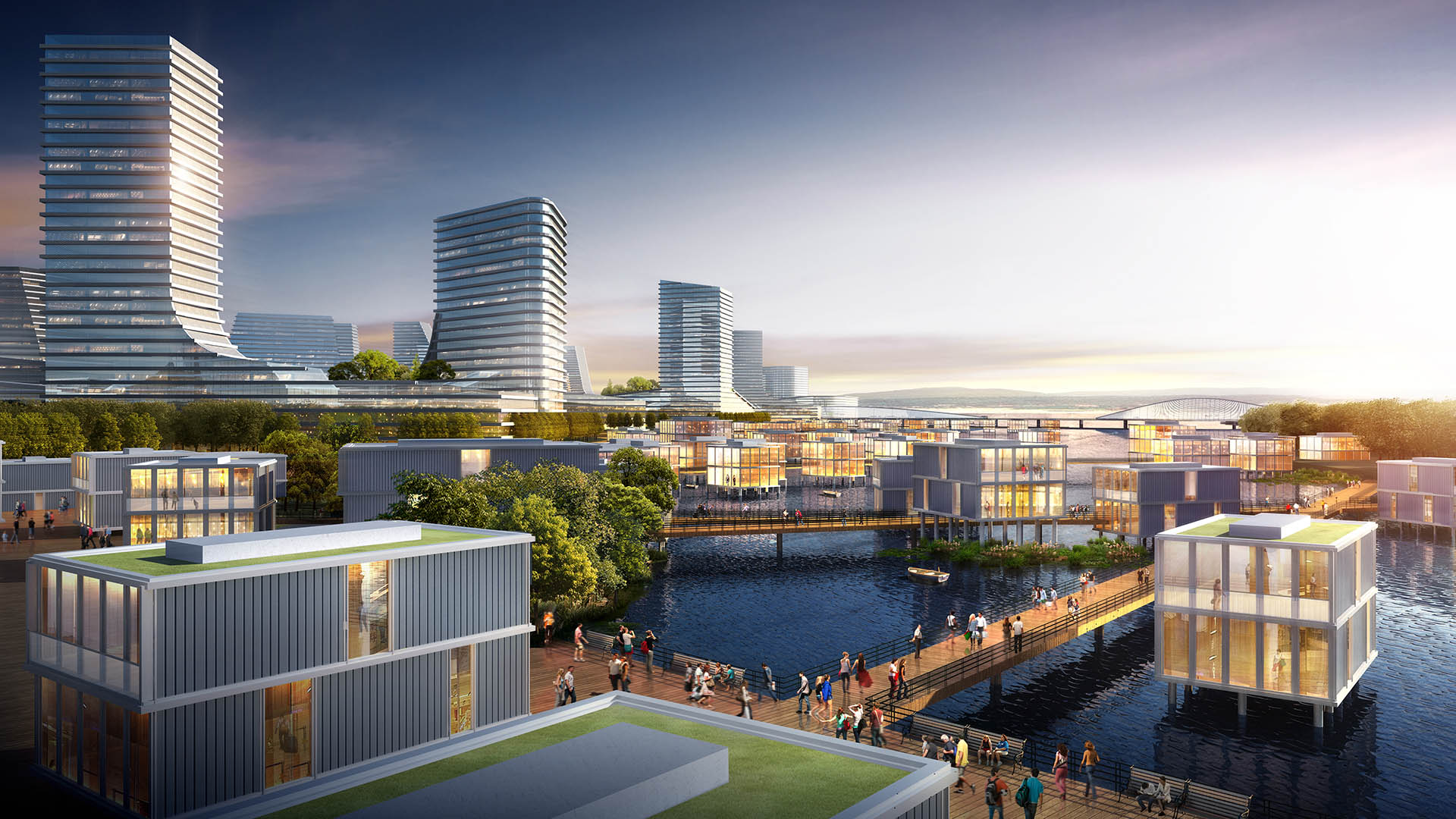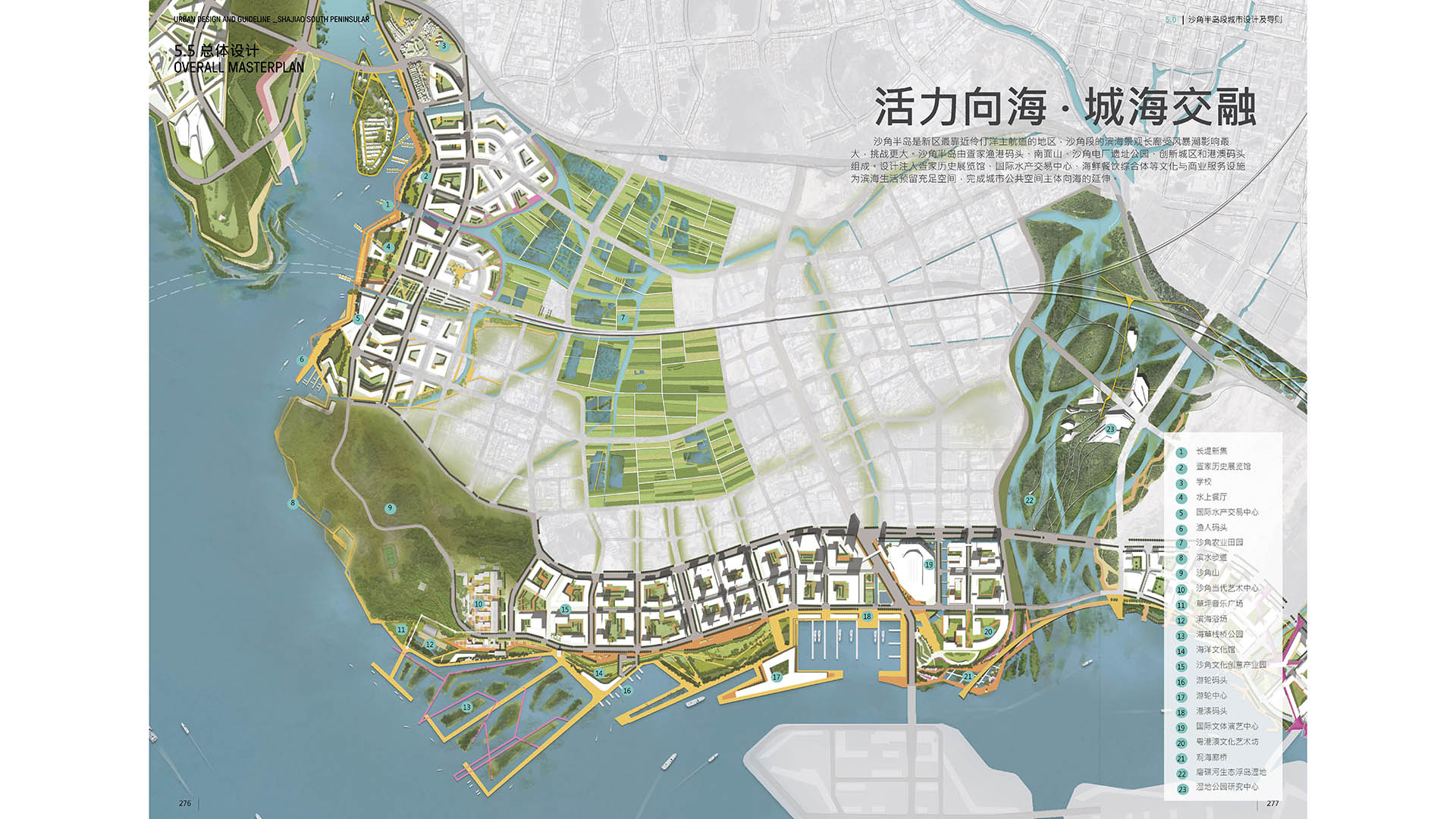The Dongguan District is located at Binhai Bay in China’s Pearl River Delta, strategically situated between Shenzhen’s airport and the city of Guangzhou. An international competition asked for ways to capitalize on the heavy flow of traffic between them while also addressing extreme environmental risks: the World Bank ranks the Pearl River Delta at the top of its list for expected economic losses due to climate change. The area is subjected to tropical cyclones and storm surges; 85 percent of its land is due to be inundated before 2100.
The concept of fluidity helped direct planning decisions that could connect the site’s social, environmental, and capital dispositions in this future “Delta City”. Operating from the fundamental knowledge that the area could at times be up to four meters underwater, a second public ground level was established throughout the project at that height. Plugging into the suggested walkways and bridges in that elevated grid is a landscape urbanism “kit of parts” designed to facilitate constructive interchanges between building forms and architecture. Intersecting civic and hydrological systems will facilitate knowledge transfer between the region’s social and civic realms.
Kunming Eco-Communities
The concept for the Kunming Eco-Town is based on an understanding of the historical natural processes of the location. The masterplan restores balance in the landscape through sensitive development. In using a watershed planning approach to determine the most sensitive lands and subsequently, where development is appropriate, the issues of a healthy, functioni...
Mountain House
SWA provided comprehensive master planning services for a new 4,700-acre community located near the foothills of California’s San Joaquin Valley. Envisioned as a sustainable, “smart growth” town located on less productive agricultural land, the community is designed to provide an internal balance of jobs and housing to mitigate traffic impacts. Working for the...
Santaluz
This planned community 30 minutes north of San Diego is a testament to the collaboration of a visionary client, talented land planner, and creative designers and marketers. Set gracefully on its rolling site and preserving over half its acreage as open space, Santaluz is both a model of environmental planning and a financial success, out-performing all its loc...
Riyadh East Sub-Center
SWA provided comprehensive planning for a new 300-hectare commercial, mixed-use center in northeast Riyadh abutting the KKI Airport. This area is part of an urban management framework being developed to guide the future growth of the city. SWA developed a plan and implementation strategy to establish an urban center comprising residential neighborhoods, corpor...















